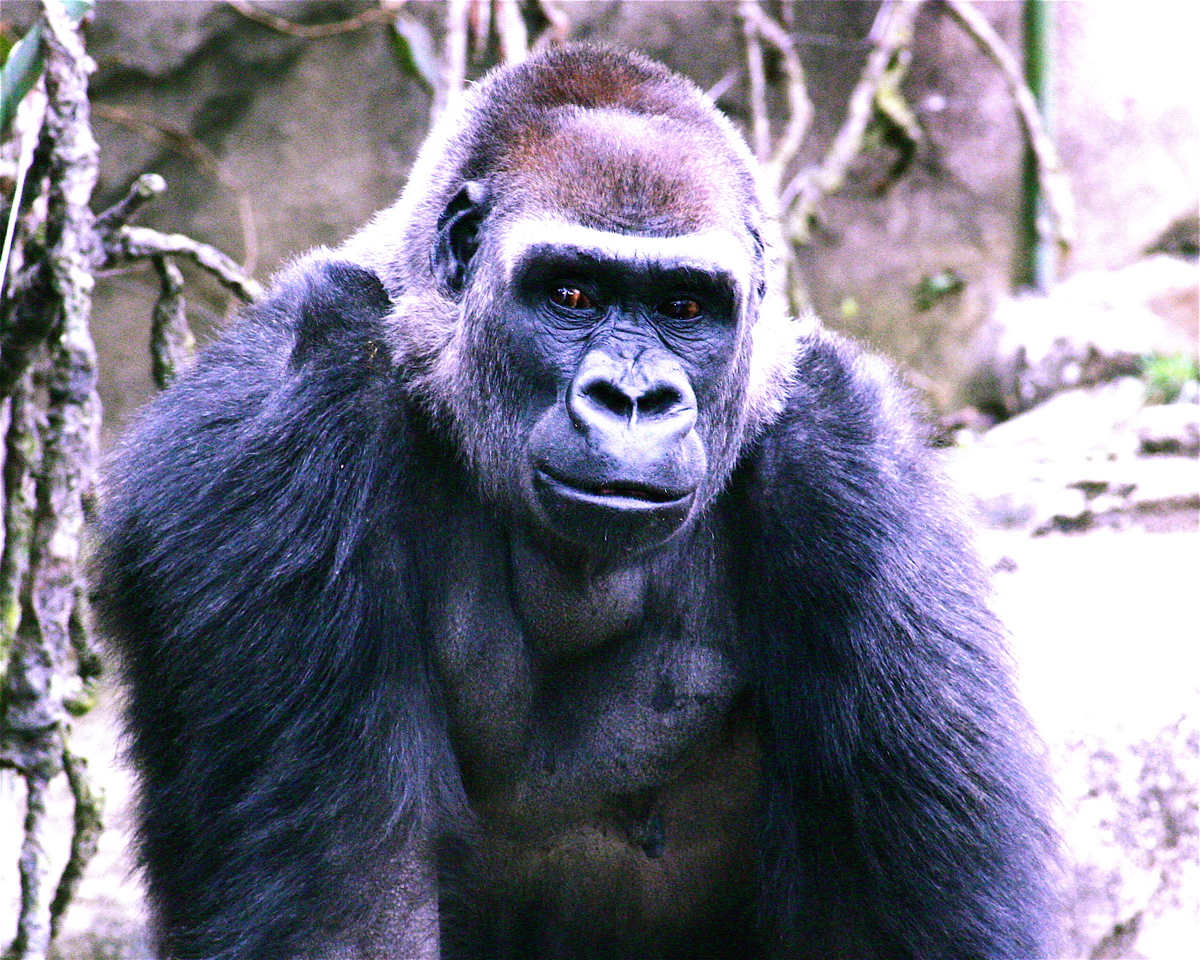
Polygyny in animals
Polygyny (/pəˈlɪdʒɪni/; from Neo-Greek πολυγυνία, from πολύ- (polú-) 'many', and γυνή (gunḗ) 'woman, wife')[1] is a mating system in which one male lives and mates with multiple females but each female only mates with a few males. Systems where several females mate with several males are defined either as promiscuity or polygynandry. Lek mating is frequently regarded as a form of polygyny, because one male mates with many females, but lek-based mating systems differ in that the male has no attachment to the females with whom he mates, and that mating females lack attachment to one another.[2]
This article is about polygyny in non-human species. For polygyny in humans, see Polygyny.Polygyny is typical of one-male, multi-female groups[3] and can be found in many species including: elephant seal,[4] spotted hyena,[5] gorilla, red-winged prinia, house wren, hamadryas baboon, common pheasant, red deer, Bengal tiger, Xylocopa sonorina, Anthidium manicatum and elk. Often in polygynous systems, females will provide the majority of parental care.[6]
Costs and benefits for males[edit]
Costs[edit]
In polygynous systems there is less genetic diversity due to the fact that one male sires all of the offspring. Additionally, it is difficult for males to monopolize many females at once, leading to extra-pair copulations in which a few females are able to mate with another male, while not being watched by the breeding male.[3] (Some studies also show that EPC is less common in polygyny compared to monogamy.[12]) These breeding males also have short tenure, and it is common for groups of males who do not have harems to attack a breeding male in order to gain reproductive access to his females.
In some cases, polygyny can lead to aggression between males. An example of species that exhibit male-male aggression under polygynous system is Allobates femoralis. Physical aggression can be induced by territorial defense and competition in courtship.[13] Especially, during the courtship march, a competing male can intercept the female while the male who originally courted the female searches for an oviposition site. In this case, the physical aggression between males can last about 15 minutes until one of the males leave the site.[13]
Benefits[edit]
The largest advantage for males in a polygynous mating system is the increased fitness and reproductive success of the lone male because he will father all the offspring. Being the sole male of a harem is highly advantageous for the male because he has a much higher chance of his progeny surviving, which means he is passing on his genes to more individuals.
Costs and benefits for females[edit]
Costs[edit]
Due to the fact that one male sires all of the offspring there is less genetic diversity in the community, which is disadvantageous to females. Additionally, females sometimes encounter infanticide, which is when a breeding male is overthrown and a new breeding male becomes dominant and kills all of their current offspring, as he has not fathered them. Because the females no longer have offspring to nurse, they will go into estrous sooner, which allows the new breeding male to mate with the females earlier.[3]
Benefits[edit]
Some females willingly choose polygyny in order to gain access to the "best" resources available. In these cases, the benefits from superior resource access must outweigh the opportunity cost of giving up monogamous parental care by a male. They also can get support from the same group of other females when in danger, like a female lion.
Females in polygyny may have less extra-pair copulation. In socially polygynous birds, EPP is only half as common as in socially monogamous birds. Some ethologists consider this finding to be support for the 'female choice' hypothesis of mating systems in birds.[12] A polygynous leader male will always be the best mating choice before he is beaten by another male, so it is harder for females to find a partner better than their mate in polygyny as compared to monogamy. This might reduce the number of females at risk for EPC once their mate finds out.